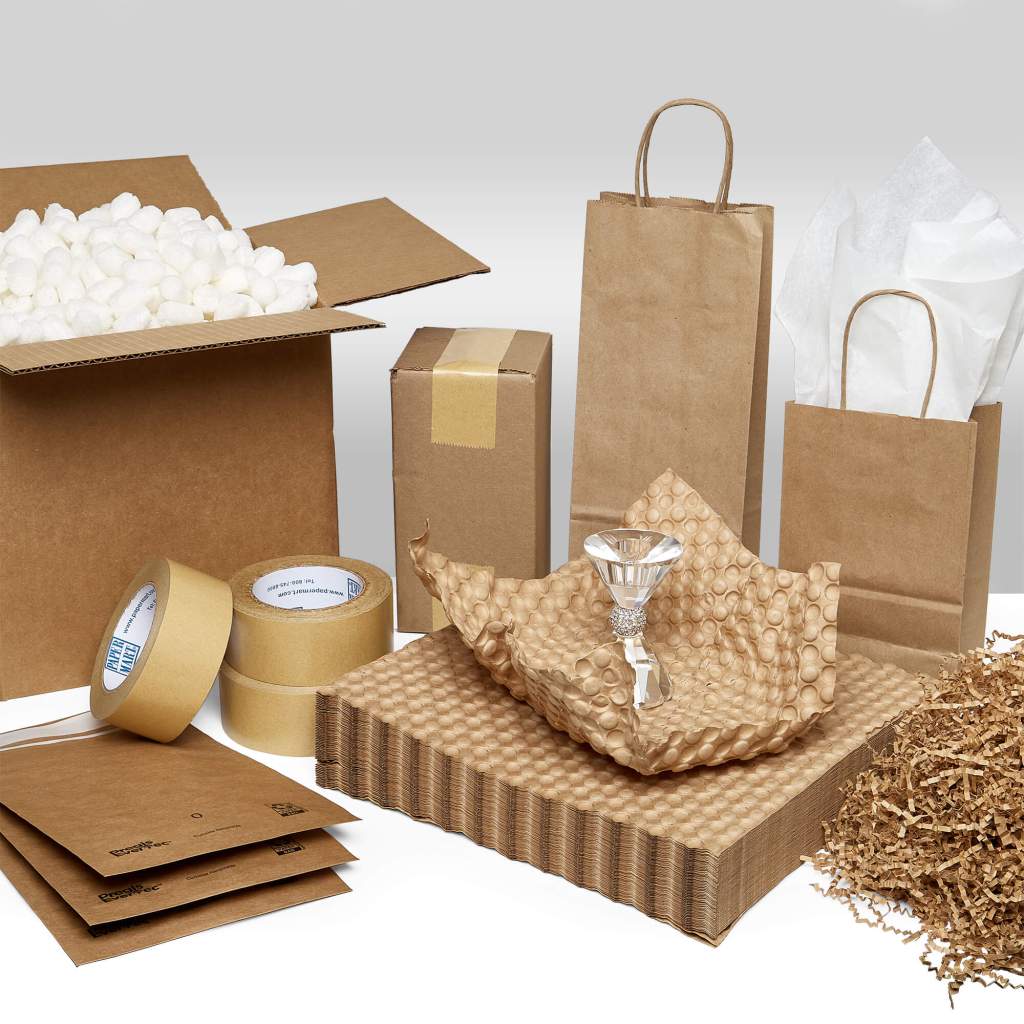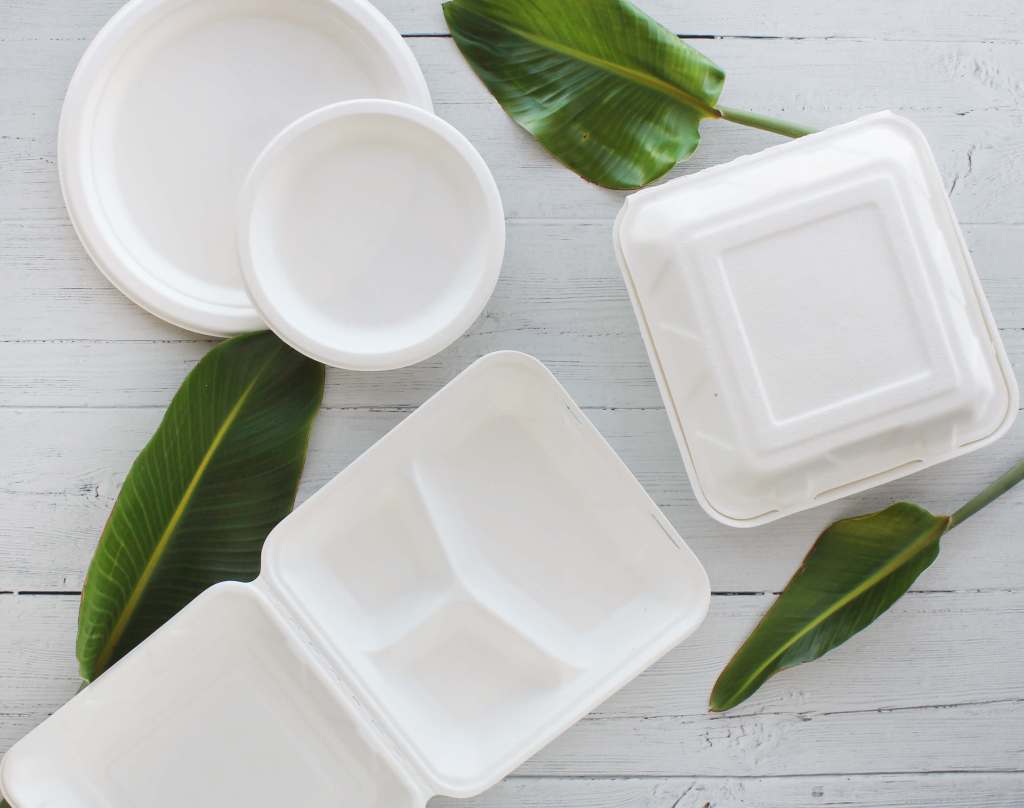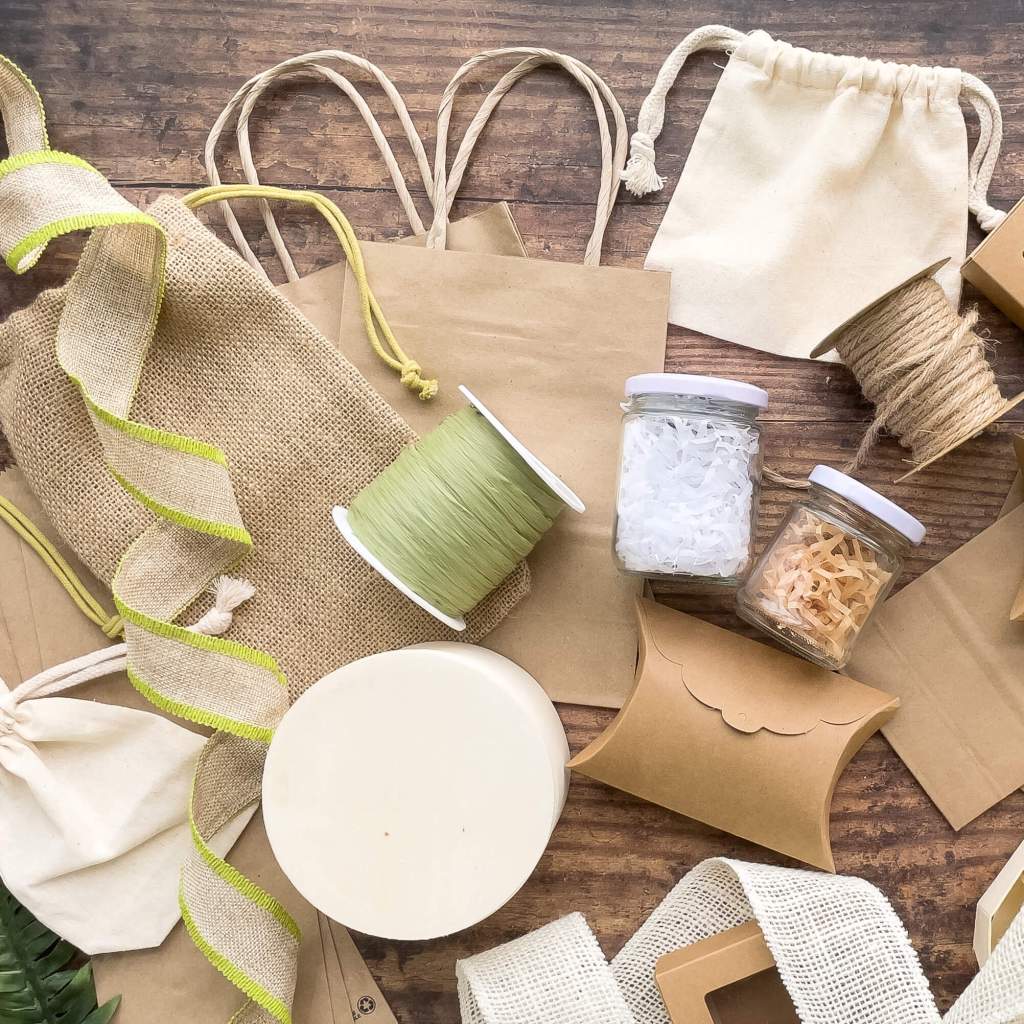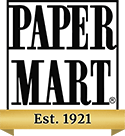In recent years, there has been a rise in demand for eco-friendly alternatives to conventional packaging. Sustainable packaging aims to minimize the environmental impact of packaging by reducing waste, conserving resources, and using biodegradable or recyclable materials.
With the increasing popularity of sustainable living and eco-conscious choices, businesses and consumers alike are actively seeking out sustainable packaging solutions. In this blog, we will delve into the latest trends, benefits, and practical solutions for choosing sustainable packaging, whether you’re a business or a consumer.

What is Sustainable Packaging?
Sustainable packaging refers to the design, production, and use of packaging materials that have minimal negative impact on the environment, society, and economy. It involves considering the entire lifecycle of a packaging material, from sourcing raw materials to disposal or recycling.
The primary goal of sustainable packaging is to minimize resource consumption, reduce waste generation, and mitigate the environmental and social impacts associated with traditional packaging practices. This approach emphasizes the use of renewable and recyclable materials, optimizing packaging design to reduce material usage and energy consumption, promoting responsible sourcing and production methods, and facilitating effective recycling or composting at the end of the packaging’s life.
Sustainable packaging is of utmost importance in the food industry in today’s world due to environmental concerns and resource scarcity. Adopting sustainable packaging practices allows businesses and consumers to reduce their carbon footprint and minimize waste generation. It conserves resources through the use of renewable materials, promotes recycling and reuse, and decreases energy consumption.
This type of packaging also safeguards ecosystems and wildlife by reducing pollution and limiting the extraction of non-renewable resources. Additionally, it enhances brand reputation and consumer loyalty as more individuals seek environmentally friendly products. Ultimately, sustainable packaging fosters a circular and sustainable economy, benefiting the planet and society as a supply chain as a whole.
The Environmental Impact of Packaging
Packaging has a significant environmental impact, primarily through pollution, resource depletion, and climate change. One of the major concerns is pollution. Improper disposal of packaging materials, such as plastic, can lead to pollution of waterways and ecosystems. Plastic packaging, in particular, poses a severe threat as it can take hundreds of years to decompose, leading to the accumulation of plastic waste in landfills, oceans, and natural habitats. This pollution not only harms wildlife but also has detrimental effects on human health.
Packaging also contributes to resource depletion. The production of packaging materials, especially those derived from non-renewable resources like fossil fuels, requires extensive energy and raw material inputs. This leads to the depletion of natural resources such as oil, gas, and minerals. Additionally, the extraction of these resources often involves destructive practices like deforestation, which further exacerbates environmental degradation.
Furthermore, packaging plays a role in climate change. The manufacturing, transportation, and disposal of packaging materials contribute to greenhouse gas emissions, primarily carbon dioxide. The extraction and production processes of packaging materials release CO2 into the atmosphere, contributing to the accumulation of greenhouse gases and the subsequent warming of the planet. Additionally, the incineration or improper disposal of packaging waste can release greenhouse gases and other pollutants, further exacerbating climate change and air pollution.
To mitigate these environmental impacts, sustainable packaging practices, such as using renewable materials and promoting recycling, are crucial for reducing pollution, resource depletion, and greenhouse gas emissions.

What are the 7 R’s of Sustainable Packaging?
The 7 R’s of sustainable packaging are a set of principles aimed at promoting environmentally responsible packaging practices. They serve as guidelines for designing, using, and sustainably disposing of packaging materials. The 7 R’s of edible packaging include:
Reduce:
Minimizing the amount of packaging used by optimizing design and material selection, reducing waste generation, and considering alternative and flexible packaging and options.
Reuse:
Encouraging the reuse of packaging materials whenever possible to make recycled materials extend their lifespan and reduce the need for new packaging production.
Recycle:
Designing packaging materials to be easily recyclable and support recycling infrastructure; thus ensuring proper recycling and minimizing waste sent to landfills.
Repurpose:
Finding new uses for recycled packaging materials to give them a second life.
Refuse:
Avoiding excessive or unnecessary packaging and opting for products with minimal or zero waste and sustainable packaging. Also encouraging producers to adopt eco-friendly packaging practices.
Rethink:
Encouraging innovation and creative thinking to find alternative packaging solutions that are more sustainable, efficient, and less harmful to the environment.
Rot:
Composting biodegradable packaging materials and returning them to the natural environment.
By following these principles, businesses, and individuals can contribute to reducing the environmental impact of packaging and work towards a more sustainable and circular economy.

Frequently Asked Questions about Sustainable and Compostable Packaging
What is considered sustainable packaging?
Sustainable packaging refers to packaging materials and practices that have minimal negative environmental impact, considering the entire lifecycle, from sourcing to disposal. It focuses on reducing resource consumption, waste generation, and environmental and social impacts.
What are some examples of sustainable packaging?
Examples of sustainable packaging include biodegradable or compostable materials (ex: our Anti-Static White Biodegradable Loose Fill) and recycled content packaging. Other examples include reusable containers, packaging made from renewable resources like bamboo or plant-based plastics, and innovative designs of custom packaging that minimize material usage and maximize recyclability.
How is sustainable packaging sustainable?
Sustainable packaging is sustainable because it prioritizes environmentally friendly materials, reduces resource consumption, promotes recycling and reuse, minimizes waste generation, and considers the entire lifecycle of packaging, including responsible sourcing and disposal practices.
What are the benefits of using eco-friendly packaging for my business?
Using eco-friendly packaging for your business has several benefits, including enhancing your brand reputation, attracting environmentally conscious customers, reducing environmental impact, complying with sustainability regulations, reducing packaging costs through optimization, and fostering a positive company image.
Can sustainable packaging help reduce food waste?
Yes, sustainable packaging can help reduce food waste. Proper packaging can preserve food freshness, extend shelf life, and protect it from damage during transportation. By reducing food waste, sustainable food packaging also helps conserve resources and reduce greenhouse gas emissions associated with food production and disposal.
Why choose eco-friendly packaging in the fashion industry?
Choosing eco-friendly packaging in the fashion industry aligns with sustainability goals and consumer preferences. It helps reduce the industry’s carbon footprint, promotes responsible sourcing and production, reduces waste generation, improves brand reputation, and meets the increasing demand for environmentally conscious fashion choices.
Advantages of Using An Eco-Friendly Packaging Solution
Cost-Effective: Can lead to savings in material costs and waste management. Optimizing packaging designs can reduce the need for excess materials, saving on production and transportation costs.
Brand Reputation: Contributes to building a positive brand reputation by appealing to environmentally conscious consumers and stakeholders. Also helps differentiate your brand from competitors and improve customer perception.
Customer Loyalty: Builds customer loyalty by demonstrating a commitment to sustainability. Encourages repeat purchases and positive word-of-mouth marketing. Can help attract new customers who prioritize environmentally friendly practices.
Government Incentives: Qualifies for government incentives and certifications that recognize sustainable practices. Compliance with environmental regulations and standards can avoid potential fines and penalties. Can also provide a business with access to environmentally conscious government contracts and partnerships.

Sustainable Packaging for Your Daily Needs
Sustainable packaging for your daily needs is crucial in promoting a more eco-friendly lifestyle. Consumer awareness plays a vital role in this regard. By understanding the environmental impact of packaging materials, consumers can make informed choices and demand more sustainable materials and packaging options. Consumers need to stay informed about the importance of sustainable packaging and actively seek products that align with their values, encouraging companies to adopt greener practices.
How to Identify Sustainable Packaging
Identifying sustainable packaging involves looking for certain characteristics. Consumers can prioritize packaging made from renewable and recyclable materials, such as paper or plant-based plastics. It is also beneficial to choose packaging that is minimalistic, lightweight, and designed for efficient use of materials. Additionally, certifications or labels such as the Forest Stewardship Council (FSC) or the How2Recycle label can help consumers identify packaging that meets specific sustainability criteria.
To shop FSC-certified items, check out Paper Mart’s selection of FSC-certified products.
How to Choose Sustainable Packaging Materials
Choosing sustainable packaging offers numerous benefits. It helps reduce resource consumption, waste generation, and greenhouse gas emissions. By opting for sustainable packaging, consumers contribute to the preservation of natural resources, protection of ecosystems, and mitigation of climate change. Additionally, sustainable packaging can safeguard human health by avoiding the use of harmful chemicals or toxins. Moreover, choosing sustainable packaging allows consumers to support businesses that prioritize environmental responsibility, leading to a more sustainable and ethical marketplace.
Sustainable Packaging for Businesses
Sustainable packaging is essential for businesses to demonstrate their commitment to environmental responsibility and meet the growing consumer demand for eco-friendly products. Business awareness plays a critical role in this regard. By understanding the environmental impact of packaging and the benefits of sustainable practices, businesses can make informed decisions and actively seek out solutions for sustainable packaging. Being aware of the packaging sustainability trends and staying up-to-date with regulations and certifications can help businesses stay ahead in the market and attract environmentally conscious customers.
Implementing sustainable packaging involves several key steps. Businesses can start by conducting a packaging audit to assess the environmental impact of their current packaging materials and practices. They can then explore alternative packaging materials, such as biodegradable or other recyclable packaging options, and consider packaging design changes to optimize material usage and reduce waste. Collaborating with suppliers who prioritize sustainable sourcing and production is also crucial. Additionally, businesses can educate their employees and stakeholders about the importance of sustainable packaging and develop a sustainability strategy that includes goals, targets, and ongoing monitoring and evaluation to ensure continuous improvement.
By embracing sustainable packaging, businesses can not only reduce their environmental footprint but also gain a competitive advantage, enhance brand reputation, and align with consumer preferences for eco-friendly products. It demonstrates a commitment to sustainability and positions businesses as responsible corporate citizens in the eyes of customers, employees, and stakeholders.
Trends in Environmentally Conscious Packaging
Trends in environmentally conscious packaging reflect the evolving landscape of sustainability and the increasing demand for eco-friendly solutions. One prominent trend is the development of innovative sustainable packaging designs. Companies are exploring alternative materials, such as plant-based plastics or biodegradable packaging, and adopting minimalist designs that minimize waste and optimize material usage. These innovative eco packaging designs focus on reducing the environmental impact of packaging while maintaining functionality and aesthetics.
Changing consumer demands also drive trends in environmentally conscious product packaging. Consumers are increasingly seeking products that align with their values and have minimal environmental impact. They prioritize packaging made from renewable or recyclable materials, and they expect transparency and clear labeling regarding the sustainability of packaging choices. As a result, businesses are responding by adopting more sustainable packaging practices and actively communicating their eco-friendly initiatives to meet consumer expectations.
Emerging technologies are also influencing trends in environmentally conscious packaging. Advancements in materials science and manufacturing techniques are enabling the development of new, solutions for sustainable packaging. For example, bioplastics derived from renewable resources or packaging made from agricultural waste are gaining traction. Additionally, technologies like smart packaging, which monitors product freshness or provides interactive experiences for consumers, are being integrated with sustainable eco friendly packaging materials to enhance functionality and consumer engagement.
Overall, the trends in environmentally conscious and green packaging also highlight the ongoing efforts to reduce environmental impact, meet changing consumer demands, and leverage emerging technologies for more sustainable and innovative packaging solutions. These trends reflect a collective commitment toward a greener future and signify the importance of sustainability in the packaging industry.

Choosing Sustainable Packaging: A Win-Win Solution for the Environment, Your Home, and Your Business
In today’s world, the importance of choosing sustainable packaging cannot be overstated. By opting for eco friendly materials and packaging solutions, we can make a positive impact on the environment, our homes, and our businesses. Throughout this discussion, we have explored several key topics surrounding sustainable packaging.
Firstly, we delved into the definition and significance of sustainable packaging. It involves designing packaging with minimal negative impact on the environment, society, and economy. Sustainable packaging aims to reduce resource consumption, waste generation, and environmental and social impacts.
Next, we explored the advantages of using eco-friendly packaging. It can be cost-effective for businesses, enhancing brand reputation, fostering customer loyalty, and even attracting government incentives. Additionally, sustainable packaging can help reduce food waste and offers specific benefits in industries such as fashion.
We also discussed sustainable packaging from both consumer and business perspectives. Consumers play a crucial role in driving demand for sustainable packaging through their awareness and choices. Businesses, on the other hand, must be aware of the environmental impact of packaging and implement sustainable practices.
Lastly, we examined the current trends in sustainable packaging. The industry is witnessing innovative sustainable packaging designs, changing consumer demands for eco-friendly products, and the integration of emerging technologies. These trends are shaping the future of packaging, offering more, environmentally friendly packaging, and efficient solutions.
What the future holds for sustainable packaging solutions
The future of sustainable packaging looks promising. With advancing technologies, innovative materials, and evolving consumer demands, we can expect continued growth and improvement in eco-friendly packaging solutions. As more businesses and consumers prioritize sustainability, the industry will witness further advancements in packaging design, material sourcing, recycling infrastructure, and waste management practices. The future outlook for sustainable packaging is one of progress and innovation, driving us toward a more sustainable and circular economy.
Choosing sustainable packaging is an important decision to make for both consumers and businesses. It benefits the environment by reducing waste and conserving resources, enhances our homes by promoting healthier and safer choices, and benefits businesses by aligning with consumer preferences and building a positive brand reputation. Let’s make conscious decisions and embrace sustainable packaging for a greener future!
To shop for eco-friendly packaging options, check out Paper Mart’s selection of Eco-Friendly and Sustainable Packaging.

